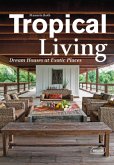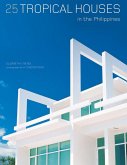Early nomadic shelters, including caves, animal skin tents, and igloos, were used for protection against the elements wind, rain, snow, and sunlight. They provided defence against predators and storage facilities for a few important possessions. These early buildings were temporary, and proximity to a water source was of prime importance. For the hunters and gatherers, shelter was for survival. Health and comfort were not yet under consideration. As civilization evolved, housing became more permanent, with increasing attention to well-being. Unlike in industrialised countries, where piped-in water, indoor toilets, and sewage systems are the norm, in many developing countries these facilities are often not available.Waterborne enteric diseases, preventable by the supply of safe water, hand washing, and appropriate sanitation, continue to be a major disease burden in poor countries. But a safe, comfortable and healthy home constitutes a primary need for people around the world irrespective of their culture or socioeconomic status. Throughout the tropics a huge diversity inhouse design and use of building materials can be observed, based on centuries of local experience, customs, and availability of natural resources for construction. Consequently, thesedifferences in building style affect indoor climate and comfort for occupants, which in turn affect occupants exposure to infectious diseases. In this book the authors describe the architectural designs of rural houses in two countries in Asia (Thailand, Philippines) and two in Africa (The Gambia, Tanzania), analyse the indoor climate of local houses in these settings as an outcome of design and determinant of comfort, and relate these factors to health, notably the risk of mosquito-borne infectious diseases such as malaria. Based on these findings and intimate understanding of local building styles and preferences, they describe a series of house modifications that could enhance comfort whilst at the same time reduce health risks.
Hinweis: Dieser Artikel kann nur an eine deutsche Lieferadresse ausgeliefert werden.
Hinweis: Dieser Artikel kann nur an eine deutsche Lieferadresse ausgeliefert werden.







